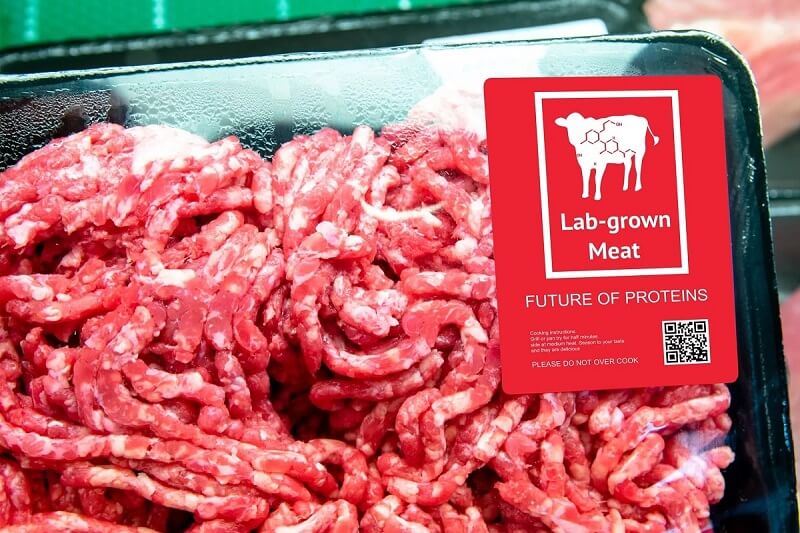Groups representing stakeholders in the lab-grown meat and cultured meat industry have urged regulators to support mandatory labeling of all cell-based meat products.
The North American Meat Institute (NAMI) and the Alliance for Meat, Poultry and Seafood Innovatio (AMPS Innovation) sent a joint letter to the U.S. Department of Agriculture (USDA), calling for input on mandatory labeling rules to foster “consumer confidence” and “transparency.”
Market Entry is Fast Approaching
In the letter, the groups stated:
“…market entry is fast approaching, and there is significant interest in the regulation of these products, particularly regarding applicable labeling requirements… The companies developing these products are committed to supporting and complying with principles that ensure labeling is truthful and not misleading, does not disparage cell-based/cultured or conventional products, enables consumers to distinguish between such products, and is consistent with the safety and nutritional qualities of the product.”
The groups also pushed for an approach that focuses on the finished product rather than the production process (noting that this has been the FSIS and FDA’s historical approach):
“AMPS Innovation and NAMI recommend that FSIS first issue an Advance Notice of Proposed Rulemaking (ANPR) to obtain more information and supporting data on finished product characteristics for cell-based/cultured meat and poultry products, particularly those that may require labeling.
This information will provide FSIS with substantive data needed to better inform the agency’s decision-making process, while also ensuring that the current labeling standards remain high.”
Why Do Lab-Grown Meat Companies Want Labelling Laws?
In the letter, the groups state they’re keen for clear labeling rules to be put in place to “foster transparency, consumer confidence, and a level-playing field while also aligning with longstanding law and policy.”
It is clear stakeholders want to ensure their cultured meat products can hit the shelf with confidence. They’re aware of the public’s doubt towards lab-grown meat and understand that standardized labeling would go a long way to tackle that.
There is also a risk that without mandatory labeling, the industry’s reputation could be damaged with a mess of different labels on grocery store shelves. Mandatory labeling would also ensure all parties involved have to up their standards and disclose where the ‘meat’ was produced.
In summary, this is more significant news than it may appear at first glance. Mandatory labeling could be the difference between customers trusting lab-grown meat or dismissing it as unsafe. It could set the industry up for fast market success, or give it an instant stumbling block.
What Are The Regulations on Lab-Grown Meat?
Lab-Grown meat is currently not regulated in the U.S. However, the building blocks are in place. The FDA and USDA are working closely to ensure regulations are confirmed soon. Food regulations typically take several years to be put in place and passed.
In 2019, the USDA and the U.S. Food and Drug Administration (FDA) agreed to take responsibility for the oversight of cell-based foods’ production process. The FDA will oversee cell banks, cell collocation and cell growth; while the Food Safety and Inspection Service (FSIS) of USDA will manage the cell harvest stage and production and labeling.
EU Lab-Grown Meat Regulations
In the E.U., a similar mandatory labeling situation is likely. Lab-Grown meat falls under the E.U.’s Novel Foods Regulation. Under this, a pre-market authorization from Europe and Food Safety Authority (EFSA) approval is required.
Big Questions Remain for Lab-Grown Meat Labelling
Big questions still need to be answered. How should lab-grown meat be labeled? The traditional livestock industry argues, should it be allowed to be referred to as ‘meat’ at all? Whatever the result, the USDA is likely to be happy to provide input. In 2018, USDA Secretary Sonny Perdue once said, “We don’t want this new technology to feel like they’ve got to go offshore or outside the United States to get a fair regulatory protocol.”


 U.S. Government Invests in Lab-Grown Meat Research for The First Time
U.S. Government Invests in Lab-Grown Meat Research for The First Time